Garden Design Books
Please see below our recommended garden design books. Just click on the links or images and you will be taken to the book-entry on Amazon.co.uk. Add the book to your basket and then click the back button on your browser to select any further books that you require.
Dream Plants for the Natural Garden 




Piet Oudolf, Henk Gerritsen, Henk Gerristen
Gerritsen and Oudolf describe their special choice of ideal plants – perennials, bulbs, grasses, ferns and small shrubs. The book provides complete growing information for each plant and advice on how to use them to best effect. Rather than striving to create big and bold masses of colourful blooms that are vigorously pruned back as soon as they have finished flowering, the Gerritsen and Oudolf choose plants chiefly for their form – leaves, flower heads and stems included – which retain their natural beauty through all the seasons. The structure of the book is based around the way that plants behave – their relative growing strengths and reliability – factors that always inform the authors’ designs.
Planting the Natural Garden 


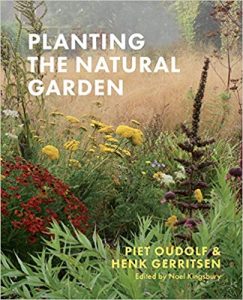
Piet Oudolf
It provides an update of cultivars developed since 1999 however, and there are a number of suggested plant combinations that do not appear in the previous books which will be helpful to those enthusiasts developing a naturalistic style of planting in their own gardens. The text is also peppered with little gems of information that increase understanding of individual plant life cycles. To keen supporters of Piet Oudolf’s and Henk Gerritson’s work, these features alone will justify getting the book.
The Landscape of Man: Shaping the… 





Sir Geoffrey Jellicoe, Susan Jellicoe
This volume looks at the landscape of 28 cultures, ranging from ancient Mesopotamia to the present day, and shows how the environment is conditioned by the philosophy and religion of each civilization. A selection from Geoffrey Jellicoe’s “The Atlanta Historical Garden” is included.
The Essential Garden Book: The… 




Terence Conran, Dan Pearson
This reference work is for anyone wanting to improve their garden. Design solutions are presented along with practical information enabling you to create a garden that looks and works as you want it to. The book is split into six sections on essential gardens, exterior design, living space, planting design, a directory and foundation techniques.
Gardening with Water 



James van Sweden
An acclaimed landscape architect explains how nonprofessional gardeners can create dramatic landscape effects by using such water elements as fountains, pools, waterfalls, and dry streams, with tips on plantings, construction diagrams, and a glossary of favourite plants.
Garden Colour Palette 


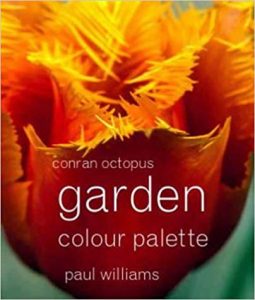
Paul Williams
This work provides information on how to achieve successful colour mixes in the garden. The split-page format enables you to mix and match plants to create colour combinations, while notes provide planning information, including the growing requirements and characteristics of each plant.
Gardening with Nature 



James van Sweden
An acclaimed landscape architect explains how nonprofessional gardeners can create dramatic landscape effects by using such water elements as fountains, pools, waterfalls, and dry streams, with tips on plantings, construction diagrams, and a glossary of favourite plants.
Bold, Romantic Gardens 




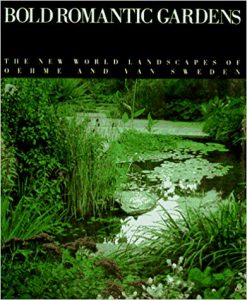
James van Sweden, Wolfgang Oehme
From the fabulous clear photographs of Van Sweden and Oeheme’s work to the intricate details of how a kerb detail works, this book will inspire and delight. Unlike so many generic garden design books that attempt to list a collection of concepts, this book shows a fusion of well-disciplined hard landscaping with a free form of grasses and another naturalistic planting
Landscape Construction: Walls, Fences… 




Catherine Fortlage, Elizabeth Phillips
Basic building construction is an essential part of the landscape designers training and these three volumes aim to fulfil the need for straightforward and clearly demonstrated information on all types of hard landscape. On the educational side, these volumes should be useful not only to students of landscape design, and landscape management but also students of other associated disciplines such as architecture and surveying. Its use as a mid-career text book for those involved in mid-career courses will be welcome. For those in practice, the annotated text will provide a reference for most of the commonly found landscape construction problems. the layout of related text, photographs and drawings make the information readily available as part of the professional’s personal bench library and also form a basis for preparing landscape construction projects in the college or university landscape course.
Designing with Plants 



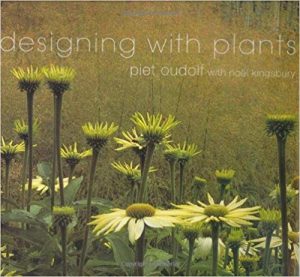
Piet Oudolf, Noel Kingsbury
This is a study of Piet Oudolf’s “New Wave” planting theory and practice. Inspired by nature, his schemes demonstrate how form, texture, light and movement are as important as colour. The manual shows the essential building blocks of this style in special planting palettes, then explains how to combine them in schemes that will bring vibrancy to the garden throughout the year.
Garden Design 



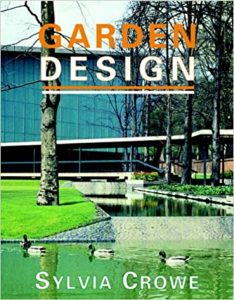
Sylvia Crowe
A history of design in gardens and a study of the need for these principles to be applied to the contemporary landscape
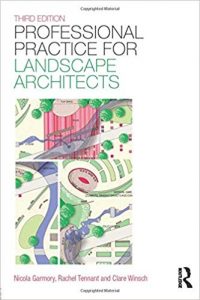 Professional Practice for Landscape Architects
Professional Practice for Landscape Architects
Rachel Tennant, Nicola Garmony, Clare Winsch
This guide is about the practical issues of being successful in the landscape design business. It provides a framework of the issues that underlie the work of landscape architects in business and in law. Collected into one volume are relevant but diverse legal, business and practical contract management themes of the Professional Practice examination. Information is presented in easy to follow line diagrams and flow charts. It should be of interest to students preparing for the professional practice examinations and as a reminder for professionals. It is relevant in the UK and in all countries in the Commonwealth that practice under UK rules.
Plan Graphics for the Landscape… 


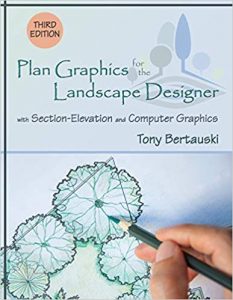
Tony Bertauski
This text was created to teach students in introductory landscape design basic drawing and drafting skills. Though computer graphic software and techniques are described, the bulk of the text teaches the materials and techniques used for drafting by hand.
Landscape Detailing: Enclosure 


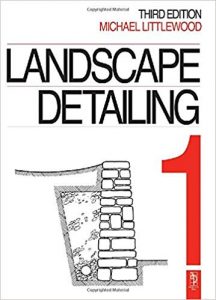
Michael Littlewood
This handbook covers walls (free-standing, screen and retaining), fences, gates, barriers and bollards. Each section begins with technical guidance notes on design and construction and then provides a list of points against which specifications can be checked. This is followed by a set of drawn-to-scale detail sheets, which can be traced for direct incorporation into a set of contract drawings. This book is designed to be of interest to landscape architects and contractors, architects, surveyors and students of landscape and architecture.
Residential Landscape Architecture:… 




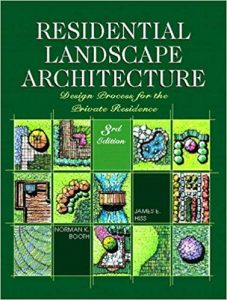
Booth & Hiss
Written for courses in landscape design, this text is aimed at students who are beginning their design careers, as well as those currently practising residential design. It provides the quality fundamentals of residential site design – exploring functional and artistic considerations.
The Planting Design Handbook 

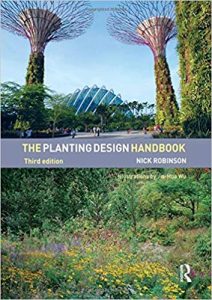
Nick Robinson, Jia-Hua Wu (Illustrator)
First published in 1992, this text is widely used on landscape architecture courses around the world. It examines the horticultural, ecological and aesthetic characteristics of plants, and discusses the structural and decorative roles of planting, spatial composition, species selection, planting plans and spacing, and the vital role of management. With its fresh look at aesthetic principles and its analysis of the design process, it reveals how a systematic approach can allow the greatest freedom for the creative imagination.
From Concept to Form in Landscape Design 



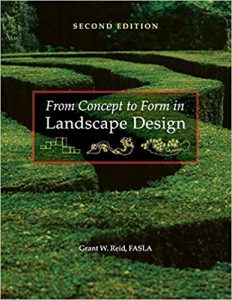
Grant W. Reid
Use this toolbox of techniques to bridge the distance between concept and form. New approaches, featuring the use of naturalism as a form determinant, ease the transition from general concepts to specific physical shapes and detailed organization of spaces.
Gardens Are for People 




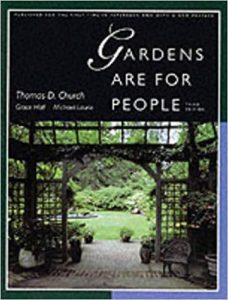
Thomas D. Church, Grace Hall, Michael Laurie
This text contains the essence of Thomas Church’s design philosophy, as well as practical advice. It is illustrated by site plans and photographs of some of the 2000 gardens that Church designed during his career. Called “the last great traditional designer and the first great modern designer”, Church was one of the central figures in the development of the modern Californian garden. For the first time, West Coast designers based their work not on imitation of East Coast traditions, but on climatic, landscape and lifestyle characteristics unique to California and the West. Church viewed the garden as a logical extension of the house, with one extending naturally into the other.
Landscape Detailing: Structures 


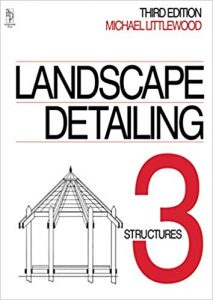
Michael Littlewood
This volume covers structures (pergolas, arches, arbours, decks, shelters, information signs) and furniture (bollards, seats, litter bins, tables). Each section begins with technical guidance notes on design and construction. A list of points against which specifications can be checked and a set of drawn-to-scale detail sheets are included.
Landscape Detailing: Surfaces 



Michael Littlewood
Covers surfaces including foundations, kerbs and paving – vehicular and pedestrian, steps and ramps, margins and edges, kerbs and wheel stops and drainage channels. The book is a reference for landscape designers.
Drawing on the Right Side of the… 




Betty Edwards
Whether you feel you have little talent and you doubt you could ever learn, or you enjoy drawing, but have not been able to get much beyond a childlike level, this book aims to give you the skill you have always wanted. If you are already drawing as a professional artist or artist-in-training, it aims to give you greater confidence in your ability and deepen your artistic perception. This 20th-anniversary edition of “Drawing on the Right Side of the Brain” has been revised, with more than 50 per cent new material, including: recent developments in brain research that relate to drawing; new insights on the use of drawing techniques in the corporate world; and education instruction on self-expression through drawing; and ways to step beyond black-and-white drawing into colour; and detailed advice on applying the five basic skills of drawing to solve problems.
British Landscape Designers and Their… 



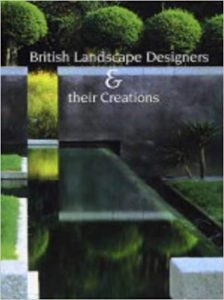
Noel Kingsbury, Sally Court
Contains examples of principal Duncan Heather’a design work as well as other guest lecturers. Good inspiration and pictures.
Landscape Graphics 




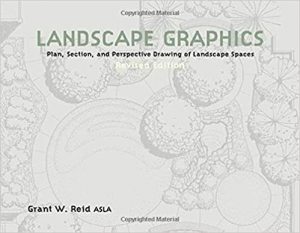
Grant W. Reid
Announcing the new revised edition of the classic industry reference! “Landscape Graphics” is the architect’s ultimate guide to all the basic graphics techniques used in landscape design and landscape architecture. Progressing from the basics into more sophisticated techniques, this guide offers clear instruction on graphic language and the design process, the basics of drafting, lettering, freehand drawing and conceptual diagramming, perspective drawing, section elevations and more. It also features carefully sequenced exercises, a complete file of graphic symbols for sections and perspectives, and a handy appendix of conversions and equivalents.
Driveways, Paths and Patios: A Complete Guide…. 




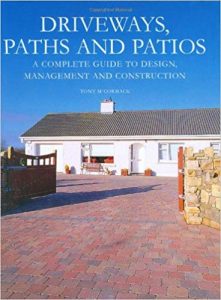
Tony McCormack
Driveways, paths and patios are an essential part of most properties and this comprehensive book provides a detailed explanation of exactly how they are designed, planned and constructed. The features of this book are: discusses the design of driveways, paths and patios with reference to their planned use, style, size, gradients and special features such as steps, ramps and terraces; considers the range of materials available including block paving, flags, slabs, setts, cubes, cobbles, loose aggregates, plain and patterned concrete and tarmac; analyses how to estimate costs and making the choice between the DIY approach and using a professional contractor; examines the critical issue of drainage; lays bare the mathematics associated with accurate setting-out and levelling; describes the range of tools and equipment needed; details the correct constructions of kerbs and edging and laying methods for flags, block paving; and much more.
Drawing and Designing with Confidence . 


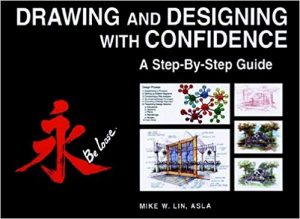
Mike Lin
This is an illustrated, step-by-step procedural guide designed to help the reader improve graphic technique. With a teaching style that stresses speed and relaxation, the author covers all aspects of design, graphic composition, media, types of drawings and perspective techniques.

























